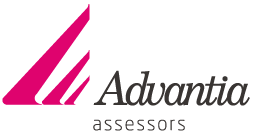The evolution of the Andorran tax system has led to the creation of taxation categories that operate in a similar manner to those in force in European countries, albeit with lower burdens. This is the case with IGI (a Catalan initialism for General Indirect Tax) which is equivalent to IVA in Spain or TVA in France.
Its introduction enabled the removal of a significant portion of the indirect taxation categories that had hitherto existed and which taxed our nation’s consumption. As a result, the indirect taxation framework proved to be more efficient for businesses and fairer for citizens.
What is the IGI?
The IGI came into force in Andorra on 1 January 2013 as a tax applicable to the supply of goods, imports, and provisions of services that occur within the national territory. Professionals and entrepreneurs transfer this tax to the user, who bears this tax burden, much like the European regulations regarding value-added taxes.
Types of IGI in Andorra
The Andorran IGI features 5 types of charges. The standard rate (the most common) is 4.5%, significantly lower than Spanish IVA (21%) or French TVA (20%), which provides sectors such as commerce with an attractive distinguishing feature for tourism.
The super-reduced rate (0%) applies to:
- Public hospital and health care, the provision of care services and reimbursable medications by CASS, and transport by ambulance.
- Services related to education, teaching, nurseries, private tutoring for school or university curricula, as well as services related to sports, physical education and culture are also included in this group as long as they are provided by public institutions or non-profit organisations.
- Finally, a 0% charge is applied to transfers of housing, in the case of purchasing a first property; the provision of legally valid officially stamped documents, for an amount not exceeding their face value; and investments in gold.
The reduced rate (1%) applies to:
- Food for human consumption (excluding alcoholic beverages) or animal feed
- Water for human and animal consumption or irrigation
- Live animals, seeds and plants
- Books, newspapers and magazines not intended for advertising purposes
The special rate (2.5% tax) includes:
- Transportation of people (excluding transport by cable
- The following cultural services (if not dependent on state-controlled/partly state-controlled administration or non-profit organisations):
o Libraries, archives and documentation centres
o Visits to fairs, museums, art galleries, monuments, places of historical significance, etc.
o The organisation of exhibitions and similar events in the educational, cultural or social sectors
o Theatrical, musical, dance, audiovisual and film performances
o Visits to botanical gardens, zoos and natural reserves or other similar protected natural spaces
- Items which, according to legislation, are considered works of art, collectibles or antiques
The increased rate (9.5%) applies to financial and banking services.
At Advantia Assessors, we have first-hand experience of the evolution of Andorran taxation and the fiscal changes it has brought about. Contact us for advice.



